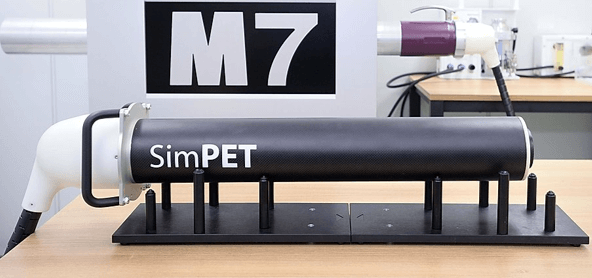There are several imaging techniques available in drug development, healthcare, and medical studies, including computed tomography (CT), magnetic resonance imaging (MRI), and positron emission tomography (PET). PET imaging is an effective method of visualizing conditions such as brain disorders, cancer, and other diseases. It is also commonly used in preclinical studies to analyze the efficiency of a potential drug target, cell membranes, and the entire body of a test subject. In this blog post, we will explore some of the key applications of PET imaging in rats and other small animals in preclinical studies.
PET Imaging
PET imaging is favored due to its non-invasive and non-destructive method, which produces three-dimensional images of internal body structures. This technique is used to diagnose a range of diseases and health conditions, identify abnormalities and determine whether specific bodily functions are performing as expected. Identifying such a vast range of bodily functions is crucial in preclinical studies as it helps researchers understand how a drug target works and the impact it has on managing or treating diseases.
Some key areas in which PET imaging is used include cardiology, drug development, neurology, and oncology, which we will discuss in further detail.
Cardiology
PET imaging can be used in cardiology in many ways. Some of the primary applications include the study of myocardial glucose metabolism and internal damage by injecting a radioactive tracer into a vein. A PET scanner then identifies conditions such as coronary artery disease, inflammation, infarction, myocardial metabolism, and myocardial perfusion.
Drug Development
PET imaging is used in drug development to provide valuable information about the biological effects of pharmaceuticals, such as binding, distribution, and drug metabolism. Understanding the efficacy of a drug target by visualizing how it interacts with the body is necessary to develop effective drug therapies further and identify new targets.
Neurology
PET imaging benefits neurology by assessing cerebral blood flow, metabolic rates, neurological receptors, and plasma membrane transporters. These studies can be used in disease models such as Alzheimer’s and Parkinson’s, epilepsy, traumatic brain injury, and other neurological conditions. In some cases, PET imaging can be used with CT or MRI methods if further detail is required.
Oncology
Oncology is the study of cancer, including cancerous cells, and the development of effective therapies. In oncology, PET imaging identifies malignant and cancerous tumors and organ and tissue functions, which lead to diagnoses and suitable cancer treatments. By studying aspects such as cell proliferation, gene expression, and metastasis, researchers can gain further insight into cancer and various types of tumors, including metastatic, orthotopic, and transgenic.
Scintica and PET Imaging
We know there is an extensive range of information available regarding different methods and equipment for scientific research, and Scintica was formed to support scientists in finding the most suitable equipment for their applications.
One of our products is the SuperArgus PET/CT, an advanced preclinical PET/CT system with high sensitivity and resolution frequently used in cardiology, drug development, neurology, oncology, and other sectors. The SuperArgus PET/CT system is the ideal solution for small animal imaging applications and can identify small metastatic tumors, biomarker interactions, and biological processes within the body.
Contact a member of Scintica today to learn more about PET imaging and its applications.
References
- https://www.azolifesciences.com/article/Imaging-Techniques-in-Drug-Discovery.aspx
